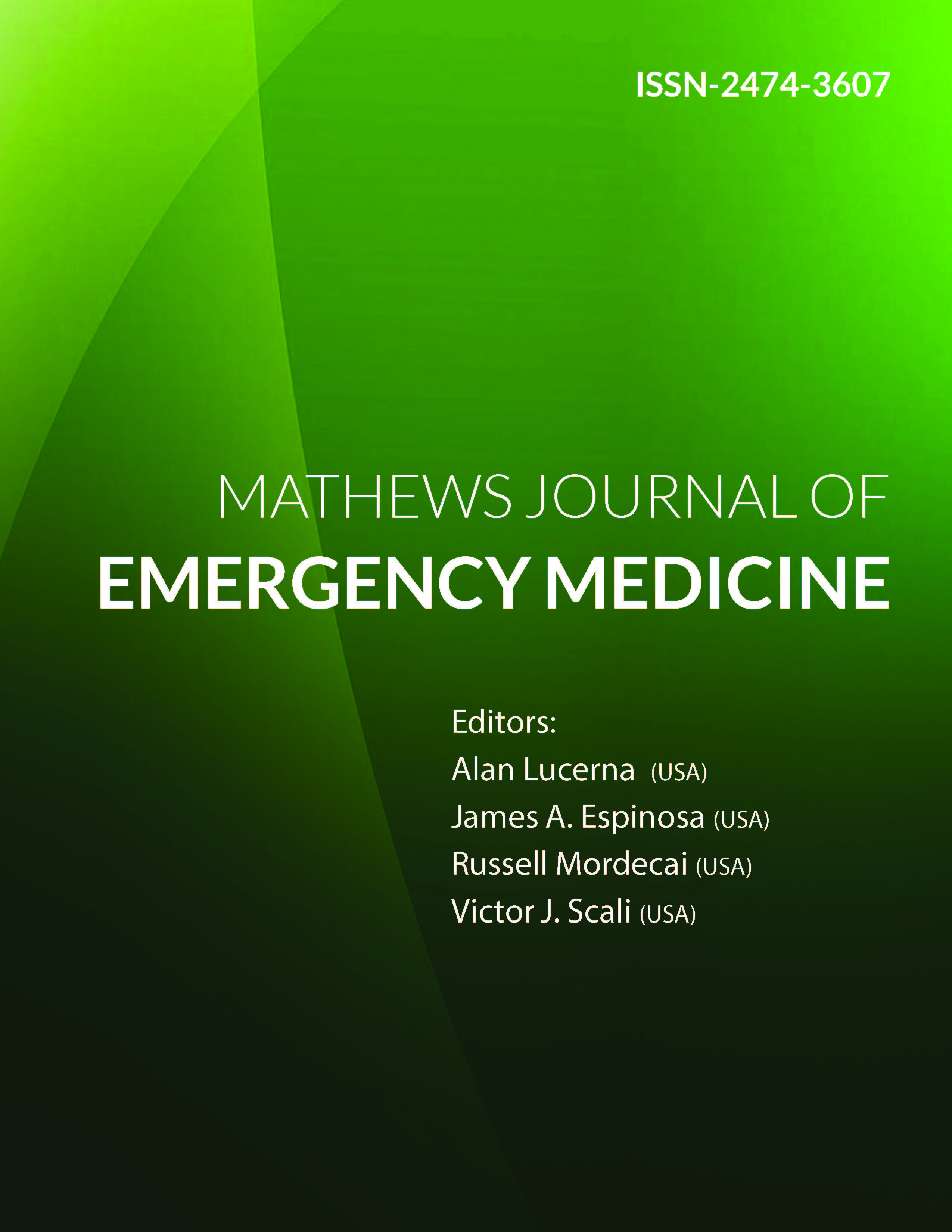
Information Links
Previous Issues Volume 5, Issue 2 - 2020
Potential Impact of Choosing Wisely-- ED Coagulation Study (PT-PTT-INR): Utilization and Economic Modeling
Victoria McElroy1, James Espinosa2*, Victor Scali3, Henny Schuitema4, Alan Lucerna5
1Department of Emergency Medicine, Shore Medical Center, Somers Point, NJ, USA
2Department of Emergency Medicine, Rowan University SOM/Jefferson - Stratford, NJ, USA
3Emergency Medicine Residency Academic Coordinator, Rowan University SOM/Jefferson - Stratford, NJ, USA
4 Chief, Department of Emergency Medicine, Jefferson, NJ
5Program Director, Emergency Medicine, Jefferson NJ/Rowan University SOM
*Corresponding Author: James Espinosa, Department of Emergency Medicine Rowan University SOM/Jefferson - Stratford, NJ, USA, 18 East Laurel Road, Stratford, NJ 08084, E-mail: [email protected]
Received Date: December 03, 2020
Published Date: December 31, 2020
Copyright: Espinosa J, et al. © 2020
Citation:Espinosa J, et al. (2020). Potential Impact of Choosing Wisely-- ED Coagulation Study (PT-PTT-INR): Utilization and Economic Modeling. Mathews J Emergency Med. (5)2:40
ABSTRACT
Purpose of the study: The purpose of this study was to look at ED compliance with the Schuur et al, Choosing Wisely recommendations for ED coagulation study utilization and to create an economic model for the relationship of specific reasons for coagulation testing in the ED to potential savings.
Materials and Methods: The setting was the three emergency departments of a community-based, university-affiliated hospital system. The study design was a retrospective chart review utilizing data from laboratory and emergency departments. One hundred charts in which a PT/INR and or PTT had been ordered were randomly selected. Laboratory data included specific costs of the tests and the overall number of tests ordered for years 2015 and 2016. An economic model for system-wide and national potential savings was created based on the resulting utilization data.
Results: The overall compliance of coagulation utilization with the Choosing Wisely recommendation was 27%. Inversely, the overall non-compliance of coagulation utilization was 73%. There were no cases in which there was a clinically significant abnormal coagulation result. The system average for utilization of PT/INR for the two years studied was 28%.The system average for utilization of PTT for the two years studied was 27% .There was some variation by campus. For PT/INR the range was 24% to 30%. For PTT the range was 23% to 29%.
Economic Modeling Results: 3 hospital system model. The 3 hospital system charge for a PT/INR is $53.00 The 3 hospital system charge for a PTT is $64.00 Using the base year, the total charge for PT/INR testing was approximately 2.3 million dollars and the total charge for PTT testing was approximately 2.7 million dollars. PT/INR potential savings: A 10% reduction in PT/INR use translates to over 230,000 dollars in savings. A 20% reduction is double that—approximately 460,000 dollars. If the maximal overutilization rate of 73% was decreased to a minimum, the savings would be over 1.6 million dollars. PTT potential savings: A 10% reduction in PTT could save over 270,000 dollars in savings. A 20% reduction is double that—approximately 540,000 dollars. If the maximal overutilization rate of 73% was decreased to a minimum, the savings would be over 1.9 million dollars.
Economic Modeling Results: National model. Exact national data for coagulation use is not readily available. However, some modeling is possible given the assumptions of the system rates of 28% utilization of PT/INR and 27% PTT, as well as the system charges applied into the model. As a model, based on CDC data from the index year (136 million ED visits) the results can be calculated as an estimation. National potential PT/INR savings: A 10% reduction in PT/INR use nationally translates to over 200 million dollars in national savings. A 20% reduction is double that—approximately 400 million dollars. National potential PT/INR savings: A 10% reduction in PTT use nationally translates to over 246 million dollars in national savings. A 20% reduction is double that—approximately 490 million dollars.
Conclusions: The overall compliance of coagulation utilization with the Choosing Wisely recommendations was 27%. Inversely, the overall non-compliance of coagulation utilization with the Choosing Wisely recommendations was 73%. The economic model strongly suggests that ordering coagulation studies in the ED using the Choosing Wisely recommendations could result in decreased utilization without clinical harm to patients and could translate into significant local and national savings.